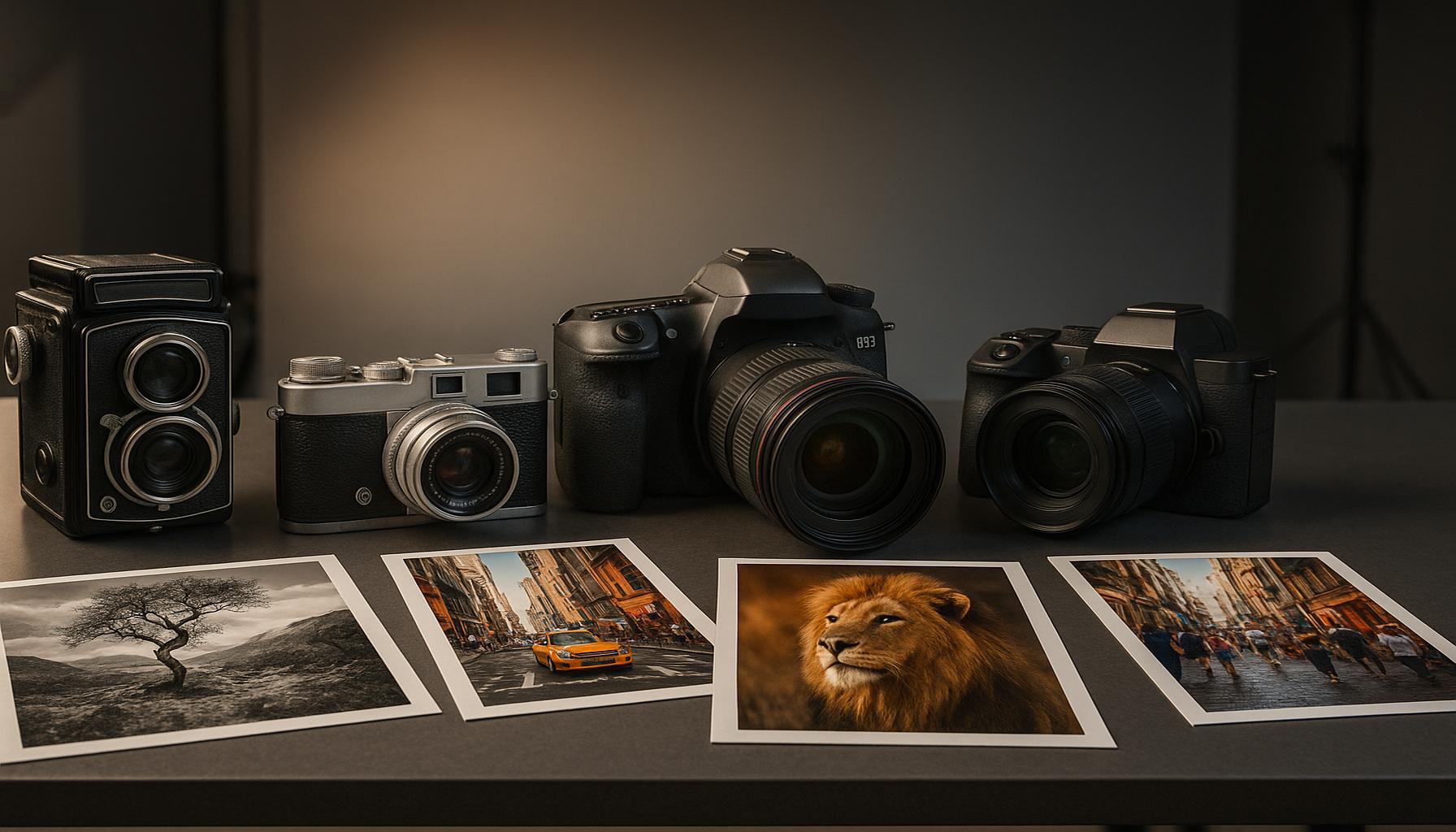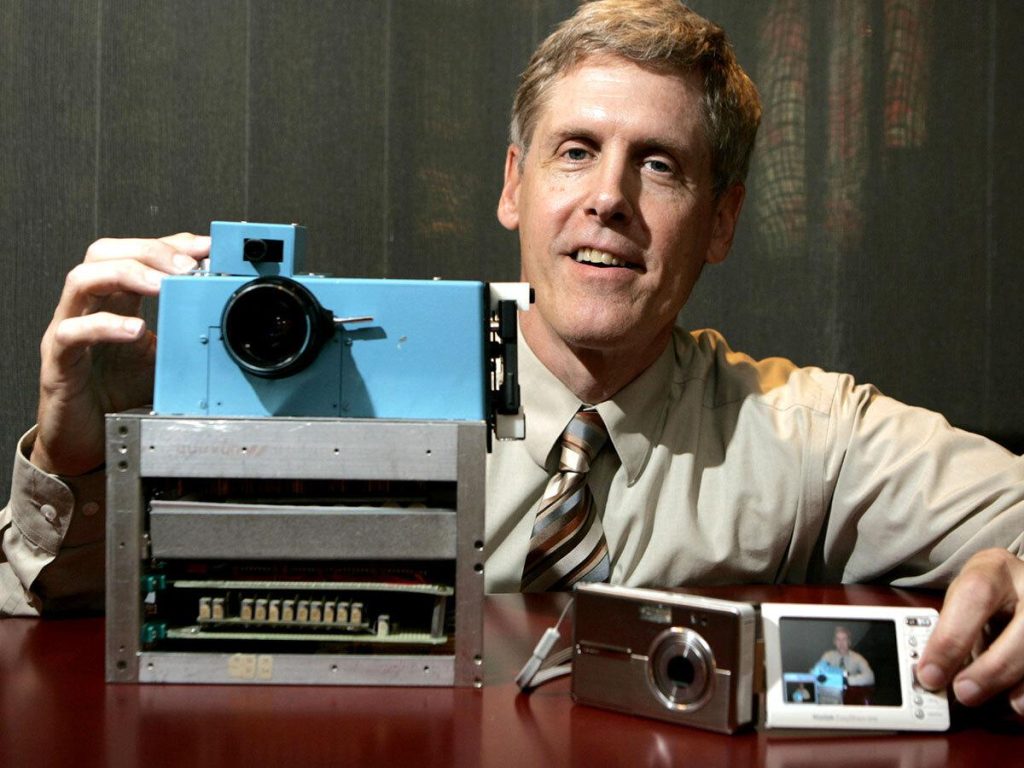Digital Photography Evolution How Tech Transformed Image Capture

The realm of photography has undergone a staggering transformation since the advent of digital technology. With each advancement, the art of capturing images has become more accessible and dynamic. This evolution has led to an explosion of creative expression, allowing hobbyists and professionals alike to explore endless possibilities through the lens.
In a world where everyone carries a camera in their pocket, it’s vital to understand how these technological innovations have reshaped our approach to photography. Some notable transitions include:
- From film to digital sensors: Revolutionizing image quality and convenience.
- Editing software breakthroughs: Transforming the post-production process into an art of its own.
- Social media influence: Redefining the way we share and appreciate photography.
This article delves into the top five significant milestones in the evolution of digital photography. Prepare to explore how technology continuously redefines the boundaries of creativity and expression in this captivating hobby.
The Evolution of Digital Photography: Transforming the Art of Image Capture Through Technology
The evolution of digital photography is a riveting journey that intertwines technological advancement, creative innovation, and the essence of human experience. As we delve deeper into the timeline of digital photography, we uncover the profound shifts in how we capture and disseminate our visual stories, with digital photography at the forefront of transforming this unique form of art. Here, we traverse the top five pivotal milestones that have significantly impacted digital photography, ranked from fifth to first, shedding light on the remarkable transition from film to pixels.
5. The Introduction of Digital Cameras
A monumental leap forward in the evolution of photography was the introduction of digital cameras in the late 20th century. Before this breakthrough, photographers were bound by the constraints of traditional film cameras, which limited their flexibility, creativity, and immediacy in capturing images. The invention of the CCD sensor—Charge-Coupled Device—propelled photography into the digital age. This cutting-edge technology converted light into digital data, enabling the capture of the first true digital photographs.

The digital camera’s emergence drastically reduced the delay in viewing photographs. No longer did photographers need to endure the tedious process of film development, which often involved chemical baths and darkrooms. This ushered in a new era of instantaneous photography, as users could review and retake photos on-the-fly. The digital revolution democratized photography, allowing more people to engage with the art in ways previously unimaginable.
The Impact of Early Digital Cameras
Early digital cameras like the Point-and-Shoot models became accessible to consumers, simplifying the process of picture-taking. Despite their limited resolution compared to today’s standards, these devices paved the way for subsequent innovations in size, functionality, and affordability. This was a pivotal moment, as it laid the groundwork for the proliferation of digital photography across different demographics.
4. The Rise of Image Editing Software
The proliferation of digital cameras naturally led to the development of image editing software, creating a new paradigm in photographic artistry. By the early 1990s, programs such as Adobe Photoshop began to reshape the landscape of photography. Suddenly, the boundary of what could be captured was broadened by the endless possibilities available through editing.
Image editing software allowed photographers to enhance, retouch, and sometimes completely transform their images. With tools for manipulating colors, contrast, and other attributes, photographers could push the boundaries of creativity. This democratization of editing skills leveled the playing field, enabling both amateurs and professionals to create compelling visual stories.
Photoshop and Beyond
Adobe Photoshop, initially developed for simple photo retouching, has evolved into a robust platform capable of supporting complex designs, montages, and digital artwork. The software’s accessibility and power turned it into a mainstay among creative professionals across multiple industries beyond photography, including graphic design and advertising.
3. The Age of Social Media and Instant Sharing
Social media has been a transformative force in the world of digital photography. Platforms like Flickr, Facebook, and later Instagram and Snapchat have redefined the photographic experience from a private hobby to an interactive global phenomenon. This shift created an ecosystem where photographers can share their work with a worldwide audience instantly.
Social media’s influence extends beyond sharing; it encourages interaction and collaboration among photographers and enthusiasts around the globe. This interconnected world has made photography a participatory and collaborative art form, inspiring trends, fostering creativity, and branching into new artistic styles.
Hashtags: The New Curators
The use of hashtags on platforms like Instagram has transformed how photographs are curated and discovered. These tags serve as markers that align photographers with specific themes, movements, or events, enabling users to easily explore related content. This mechanism has contributed to the viral spread of photographic styles and the rise of social media influencers who heavily rely on visual storytelling.
2. Smartphones as the New Cameras
The explosion of smartphone technology has fundamentally transformed the way we capture and share moments. Modern smartphones come equipped with sophisticated cameras containing features like HDR imaging, optical zoom, and advanced computational photography capabilities. These compact devices have democratized high-quality photography, eliminating the need for dedicated cameras in many everyday scenarios.
Smartphones empower users to document their lives spontaneously, leading to a marked increase in the volume of images captured globally. As quality steadily improved, the distinction between amateur and professional photography started to blur, with many using their smartphones to produce content of professional caliber.
Computational Photography: The Next Frontier
Smartphones also introduced computational photography, harnessing complex algorithms to enhance image quality and functionality. Through processes like image stacking, artificial lens blur, and real-time adjustments, smartphones can emulate the effects of high-end lenses and cameras, often at a fraction of the cost and with significantly less bulk.
1. Artificial Intelligence and the Future of Photography
At the forefront of photography’s future is the integration of artificial intelligence (AI), revolutionizing how images are captured, edited, and shared. AI algorithms offer automated image enhancements, intelligent subject detection, and even real-time stylization, simplifying the creative process for photographers of all skill levels.
Camera manufacturers have started embedding AI technology into their devices, which can recognize scenes, suggest the best possible settings, and even compose shots. This leap forward promises to unshackle photographers from the technicalities of camera settings, fully liberating their creative potential.
AI: Transforming the Photographer’s Role
The rise of AI in photography poses intriguing questions about the future role of the photographer. As AI becomes more sophisticated, it could redefine what it means to be a photographer, potentially shifting focus away from technical prowess towards pure creativity, composition, and storytelling.
In conclusion, the evolution of digital photography continues to mold the fabric of creative expression in profound and unexpected ways. From the inception of digital cameras to the rise of AI technology, every milestone has been a testament to the relentless pursuit of innovation in capturing and sharing our world’s visual narratives. Understanding these key developments not only enhances our appreciation of photography but also serves as a beacon, guiding future innovations in this ever-evolving artistic medium.
| Category | Key Features | Advantages | Disadvantages | Who Benefits Most |
|---|---|---|---|---|
| Digital Editing Tools | Includes software like Photoshop, Lightroom, and mobile apps. | Enhances creativity by allowing for adjustments in exposure, color correction, and retouching. Photographers can create art that transcends the original image. | Can lead to over-editing and unrealistic portrayals of subjects; sometimes detracts from the authenticity of the photograph. | Professional photographers and graphic designers who wish to create polished images. |
| Instant Image Sharing | Social media platforms like Instagram and Facebook facilitate quick sharing. | Allows photographers to distribute their work widely, gain immediate feedback, and build a following. This leads to increased opportunities for visibility and commercial work. | Risk of copyright issues and negative comments; potential for superficial interactions rather than substantial connections. | Aspiring photographers seeking exposure and audience engagement. |
| High-Quality Imagery | Modern cameras with high megapixels and image processing capabilities. | Produces images that are clear, rich in detail, and suitable for large prints. This elevates the quality of work and professionalism. | Can be costly to invest in high-end equipment; requires knowledge to utilize advanced features effectively. | Professional photographers and serious hobbyists aiming for high standards. |
| Digital Cloud Storage | Utilization of services like Google Drive, Dropbox, and photography-centric platforms. | Ensures images are backed up and secure, with easy access from anywhere. This mitigates the risk of data loss. | Dependence on internet connectivity; potential privacy concerns around data security. | Photographers with extensive portfolios looking to maintain safe, accessible archives. |
Frequently Asked Questions about the Evolution of Digital Photography
What are the major milestones in the evolution of digital photography?
The evolution of digital photography is marked by several key milestones. One of the earliest is the invention of the first digital camera by Kodak engineer Steve Sasson in 1975, which weighed around 8 pounds and captured black-and-white images onto a cassette tape. Another milestone was the release of the first commercially available digital camera, the Dycam Model 1, in 1990. A significant advancement came with the introduction of DSLR (Digital Single-Lens Reflex) cameras in the late 1990s, which combined the optics and mechanisms of a traditional SLR camera with a digital imaging sensor. The development of CMOS sensors enabled high-quality image capturing in more compact sizes, facilitating the widespread adoption of digital photography in smartphones. Today, new technologies such as artificial intelligence and computational photography continue to transform how images are captured and processed.
How has smartphone technology affected traditional photography equipment?
Smartphone technology has significantly impacted traditional photography equipment by integrating high-quality cameras into everyday devices. As smartphones advanced, their cameras became capable of capturing images that rival those taken with standalone digital cameras. This development has led to a decline in the sale of compact cameras and simplified the process of capturing and sharing photos instantly. Moreover, features such as built-in editing tools and instant connectivity to social media platforms have reshaped how people engage with photography. While professional photographers continue to use advanced DSLR and mirrorless cameras for their superior capabilities in certain contexts, the convenience and quality of smartphone photography have made it a preferred choice for the general public.
What role do artificial intelligence (AI) and machine learning play in modern photography?
Artificial intelligence and machine learning play an increasingly significant role in modern photography by enhancing both image capturing and post-processing. AI is used to automatically recognize and adjust settings for various scenes and subjects, ensuring optimal image quality without manual input. Features such as facial recognition, scene detection, and motion blur reduction rely on machine learning algorithms to improve accuracy and speed. In post-processing, AI-driven software offers advanced editing capabilities, such as recoloring, enhancing image details, and removing unwanted objects from photos. These technologies not only streamline the editing process but also open new creative possibilities for photographers, allowing them to achieve results that previously required considerable time and effort.
How has digital photography changed the way images are shared and stored?
Digital photography has revolutionized the way images are shared and stored by making it easier than ever to access and distribute photos worldwide. With the advent of the internet and cloud storage solutions, users can now share high-resolution images almost instantaneously across various platforms. Social media networks have also played a role in enhancing how images are displayed and interacted with, turning them into a form of social communication. Storage has evolved from physical formats like photo albums and CDs to digital archives accessible across multiple devices, providing more flexibility and security. Moreover, advancements in data compression and storage capacity allow individuals to store vast amounts of images without the constraints of physical space.
Conclusion: The Digital Evolution of Photography
The journey of digital photography has been nothing short of revolutionary, fundamentally reshaping the landscape of image capturing. From its inception, digital photography has continually pushed the boundaries of what’s possible, driving innovations that have democratized the art form. With the advent of high-resolution cameras and smartphone technology, photography has become a ubiquitous part of everyday life. This evolution has not only made capturing images more accessible but has also empowered photographers with tools once thought unimaginable.
The transition from analog to digital has introduced greater creative control, allowing photographers to experiment with techniques that were previously difficult to execute. The ability to instantly review and edit photos has led to a surge in quality and creativity. Moreover, the rise of photo-sharing platforms has fostered a global community, enabling photographers to share their work and gather inspiration from others worldwide.
As technology continues to advance, the future of digital photography holds endless possibilities. Innovations such as artificial intelligence and augmented reality promise to further expand the creative horizons of photographers. These advancements will not only enhance the quality and authenticity of images but also redefine photographic storytelling.
In conclusion, the digital evolution of photography signifies more than just technological progress; it represents a pivotal shift in how we perceive and engage with the world around us. For creative hobbyists and professional photographers alike, this evolution offers fresh avenues for exploration and expression. As the art continues to evolve, photographers are encouraged to embrace these changes, pushing their creative limits and perhaps discovering new realms in the artistry of image capturing.


